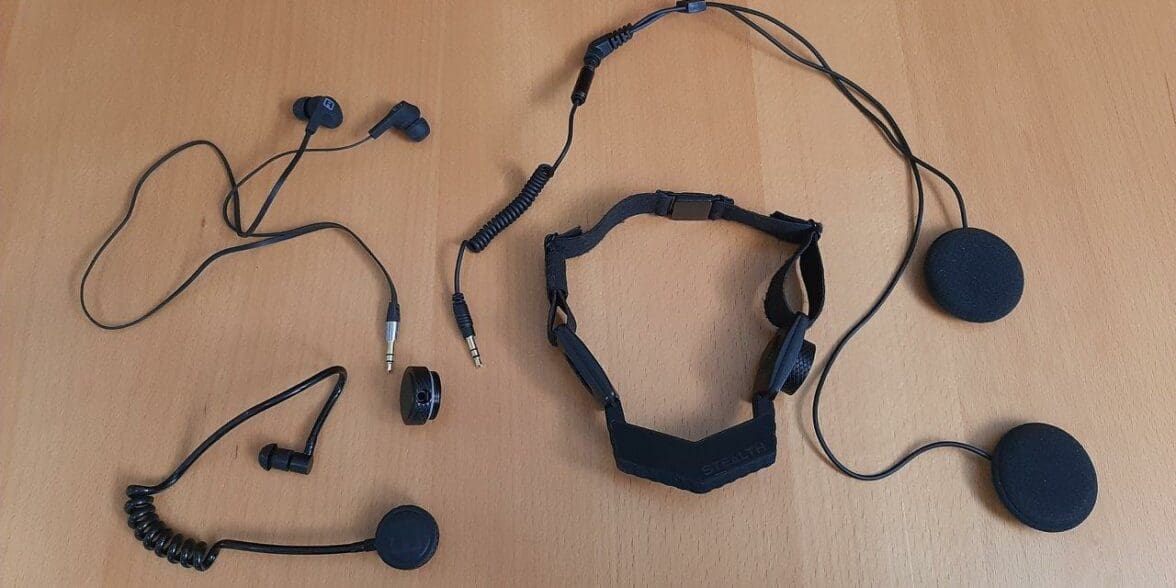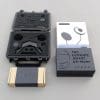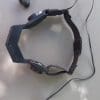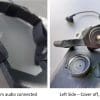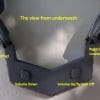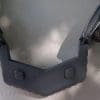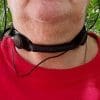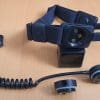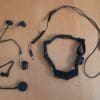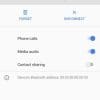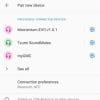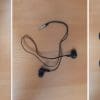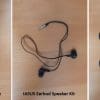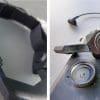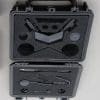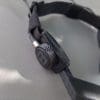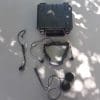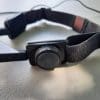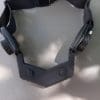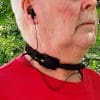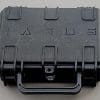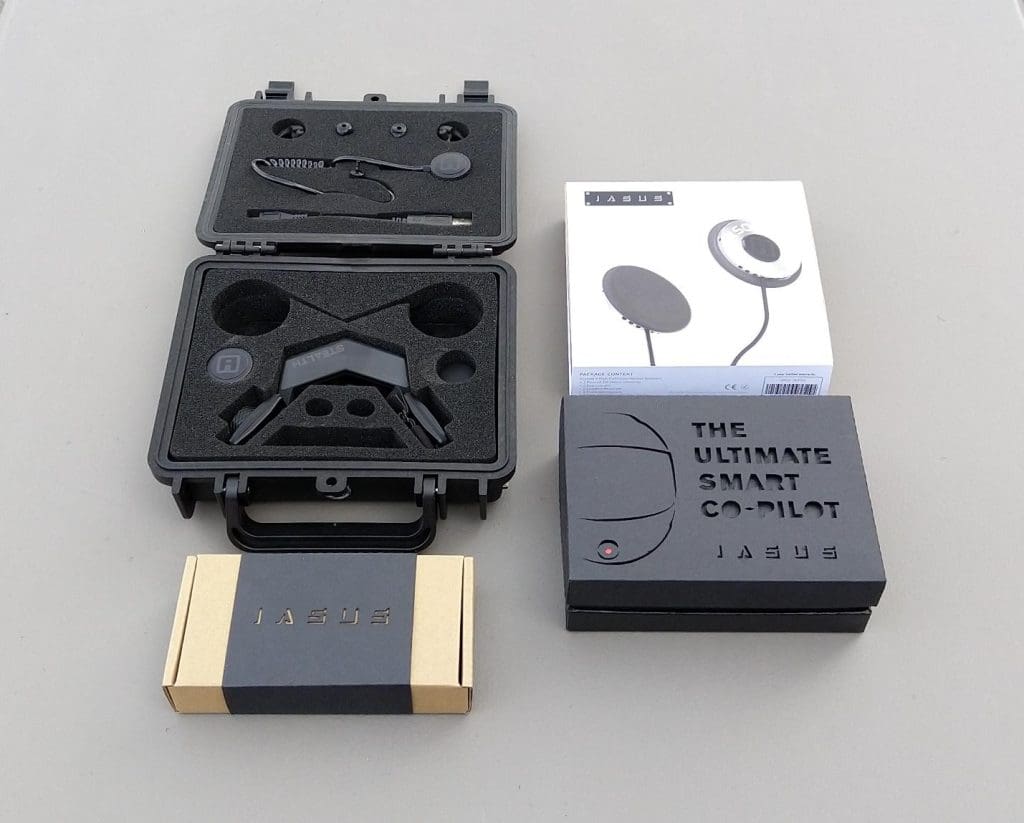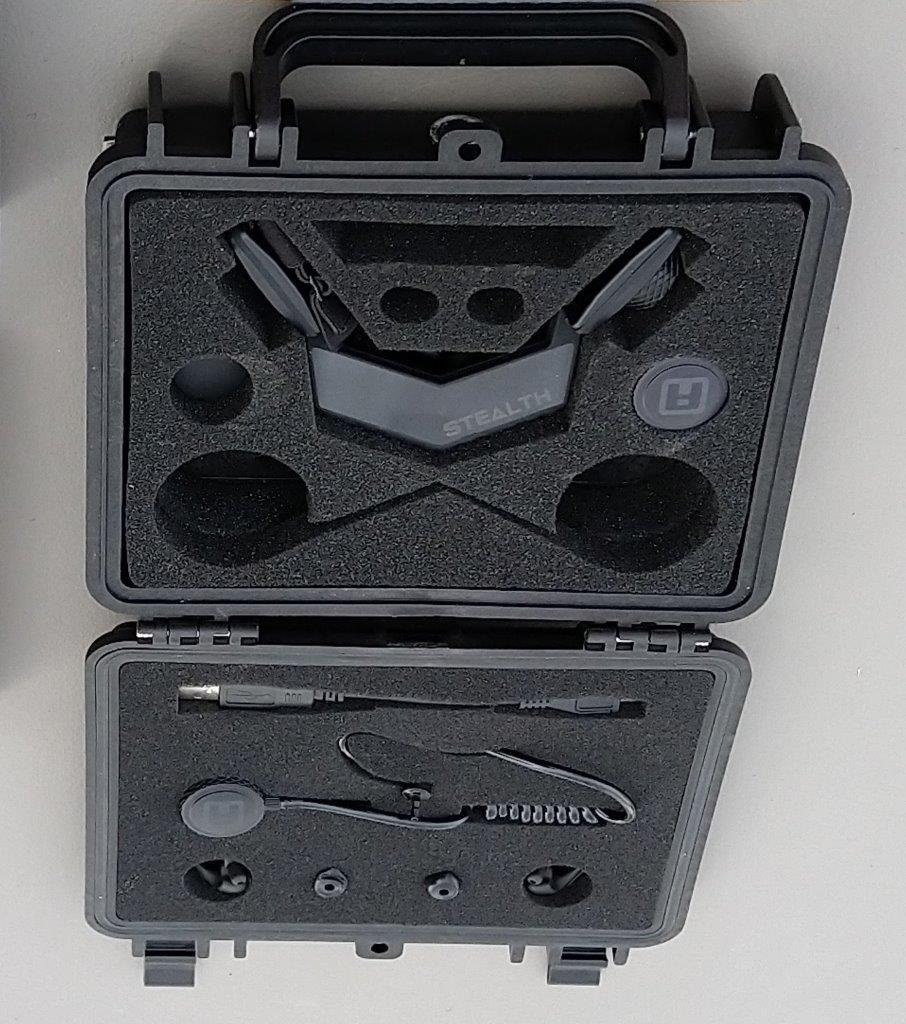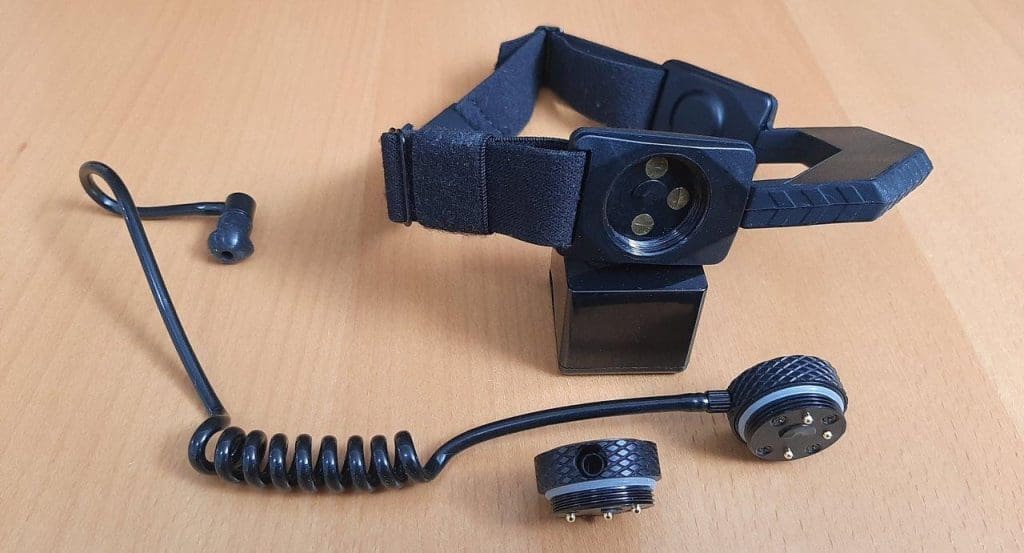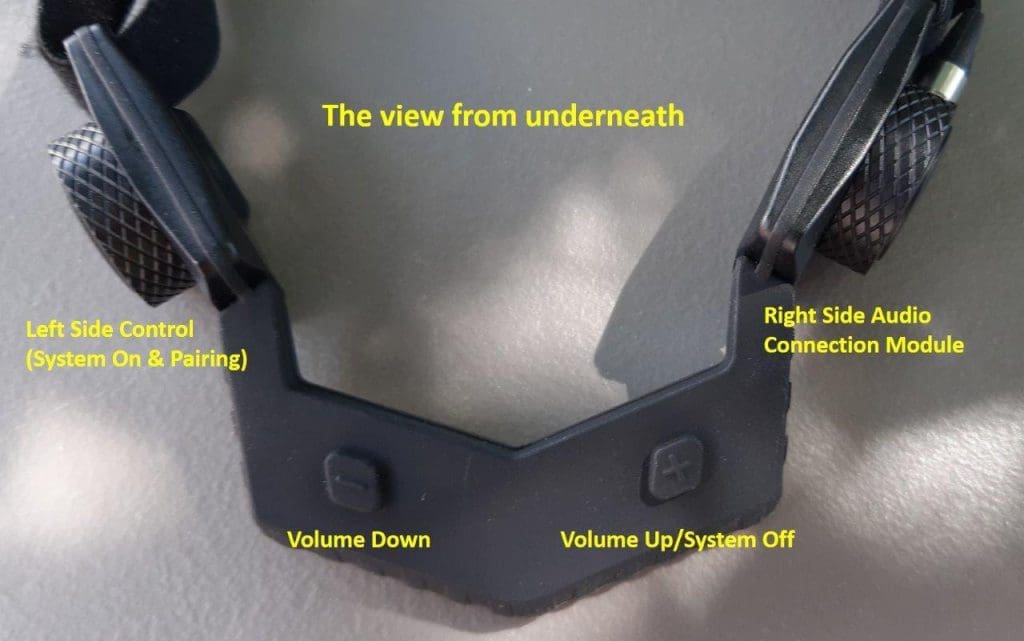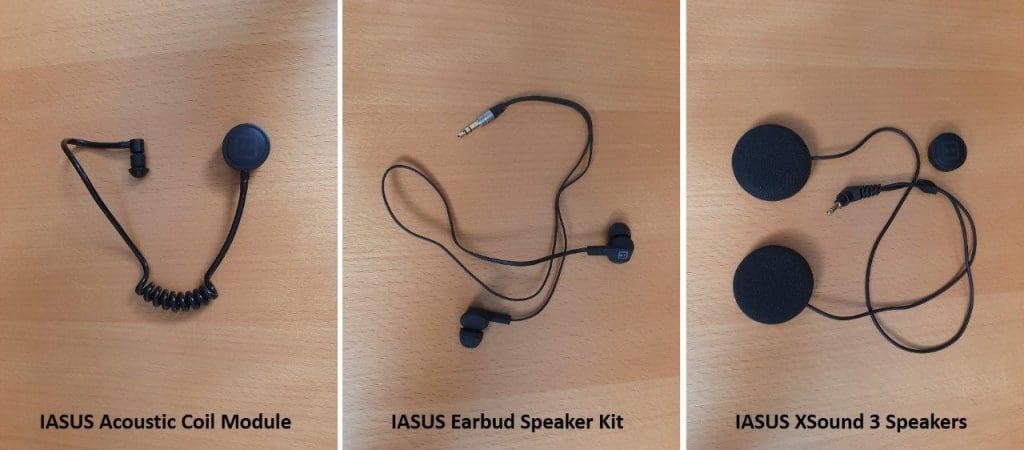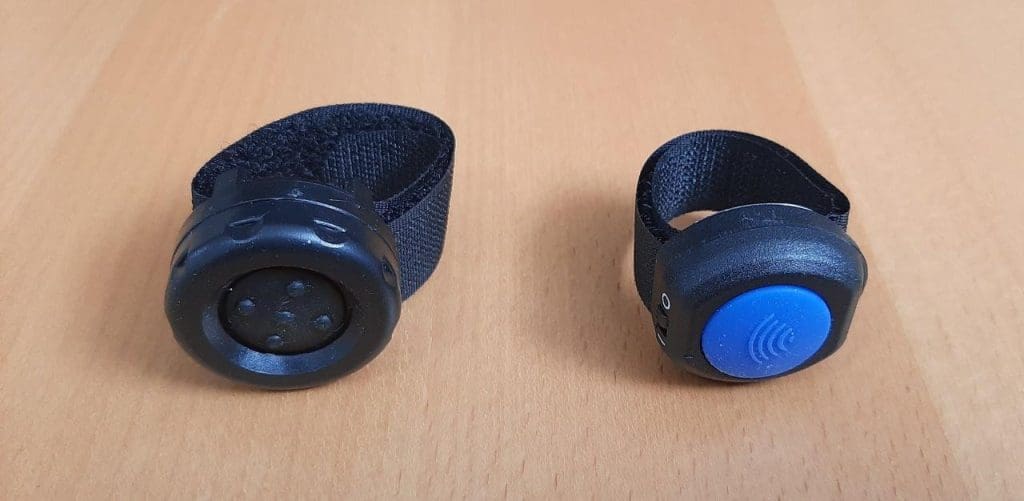Real time, face-to-face communication in our COVID-19 world is or can be severely restricted and technology-based solution is more important than ever. And thankfully, for the most part, our requirements are met or being met through solutions that provide the ability to communicate in real-time, at any time, with someone in virtually any part of the world.
Communication and data technology products that can be used without compromising personal safety protocols and the integrity of infrastructure systems are in higher demand than ever before to support first responders, medical professionals, and enforcement entities, to list only three communities of many…
In addition to this escalating demand for communications and connectivity solutions among the communities identified above, there is an ever-growing continuum among all of us as consumers for products to provide, support, and enhance personal communication and connectivity devices used for both work and play.
With much of our world now covered for some form of mobile data and personal communications and the proliferation of personal communication-based devices, there is (also) a true plethora of software-based solutions for one on one or one with many communication purposes – some identified and discussed in this review.
A Segue Into Real-Time Communications
A prime-time example regarding the criticality of real-time communications was vividly displayed live during the recovery stage of the SpaceX Crew Dragon featuring the two intrepid NASA astronauts Bob and Doug upon their return to earth earlier this year.
Still sealed in the Crew Dragon module but safely aboard the recovery vessel, an hour or so passed while potentially dangerous vapours from onboard fuels were bled off so that the lowest possible readings were provided for a safe egress environment – all as it should be.
What caught my eye though was that the individuals working around the egress side-hatch and taking care of the dissipation activities weren’t wearing much PPE initially, except for ear protectors, which they had to keep lifting so they could communicate fully.
And after finally donning full face mask PPE systems, the individuals seemingly still had to lift their face masks to communicate between themselves.
Whether this communication shortfall indicated a requirement not fully addressed, or perhaps not considered as a requirement for this type of activity, this apparent inability to communicate safely while wearing basic hearing or full-face mask PPE was a timely and disconcerting reminder that real-time communication, in some form, is or can be critical in virtually anything we do or undertake.
Real World, Real Time Communications
Shifting in motorcycling mode…as motorcyclists and road users, we (need) to constantly ‘communicate’, be it passively through observation or listening to build and maintain situational awareness or, actively – such as braking, signaling, using the horn or auxiliary lighting or changing lane/road positioning, all essential to maintaining the critical 360 safety environment.
Whether riding together or apart, something we are doing a lot of these days, but together in spirit, technology-based solutions provide the means for us to stay connected in many ways using different mediums; but overall, much of what we do or react to is based on real time communications.
And from a motorcycling perspective, real time communications are a positive and important component in developing and maintaining situational awareness and the safety toolbox, whether riding together or riding apart.
Going forward, smart helmet platforms with integrated sensors, cameras, and comms (short range BT or Mesh and/or mobile/cellular-based push-to-talk or PTT connectivity) are adding breadth and depth regarding situational awareness dynamics; although with additional concerns regarding our ability to (continue) coping with said dynamics.
Broadband Push-to-Talk (PTT) Connectivity
For many motorcyclists, wireless onboard or helmet-based communication systems have replaced wired options. This wireless – often Bluetooth or Mesh-based connectivity provides real time communications for shorter range communications between rider and passenger or rider to rider (small or large groupings).
Users of helmet communication headsets can also use their paired and connected personal smart or mobile radio devices as a communication platform as well if connected through a mobile radio gateway or to cellular based services so that the user can access public systems for receiving or placing phone calls.
But more and more use of another connectivity option, using the same personal smart device but with a new take on an older capability is now widespread – Push-to-Talk-over-Cellular or PoC. Push-to-Talk (PTT) or switched connectivity is a ‘traditional’ service that has been around for some time in various guises.
PTT never went away but continued in new forms using newer (often wireless) technologies; and its use has proliferated rapidly with many original enterprise level mobile and cellular PTT solutions in use around the world for business, industry, and in the public domain, particularly those related to emergency services in a direct and indirect response to the global pandemic.
And like many other technologies and capabilities today evolution and adaptation have brought about both convergence and migration; it’s seldom that something ‘good’ regarding real time data service or communications is ignored or left unexploited for long…
As such, we have the ability to communicate in real time almost anywhere with almost anyone by a variety of means with reliability, redundancy and if desired or needed, the ability to record & reprise (replay). The digital domain is a great enabler.
There is no shortage of platforms, enablers, or smart device Apps that support or exist solely to provide real-time or messaging services to address audio communication requirements for government, industry, business, or personal activities.
Relatedly, a growing number of mobile radio and cellular-based devices have PoC features built-in and there is a growing demand for ruggedized weatherproof products that make great solutions for government, industry, and business applications and, very good solutions for personal use.
My new Samsung XCover Pro ruggedized/waterproof smartphone is one example. It is specifically designed for industry and business use, including PoC services; but, it is proving itself as a great weatherproof personal smart device for motorcycling activities as well.
Real-Time VS Messaging
Most mainstream services utilize two approaches: real time (live) audio or voice messaging. Apps with voice messaging use recorded audio that is then sent, delivered, and then listened to by the receiver; but this whole process is not done in real time.
On the other hand, real-time is just that – live voice audio from one party to another or with multiple users, all with minimal delay or lag that is somewhat dependent on connectivity of course. Good real time services or apps also provide messaging/playback as well.
And while not a dedicated participant in much of the social media aspect of our connected world, there are some features or services that stand out, particularly for personal communication purposes. And one of the best services that address my two key requirements is Zello.
Zello
This app-based capability provides real time (live) communications, simulating two-way radio or walkie-talkie-based communication along with other services like history, replay last message, notifications, live location tracking, and very importantly, Bluetooth device support.
A feature-rich multi-platform offering, Zello uses internet (WiFi), mobile or cellular data connectivity (at least 2G) and the App is available for Android, iOS, Blackberry, Windows Phone, and Windows PC platforms.
It is the highest rated Internet-based push-to-talk service available for live streaming audio, connecting over 150M users globally, including frontline workers, response teams, professional communities, and of course, individuals.
And, in testing personal communication interface systems like the IASUS REKON and Stealth products that leverage the power of smart cellular-based or mobile devices Zello is the solution of choice for real-time services and is now a valued communication option for day to day use, test activities, and longer-term travel (when all that becomes viable again).
Zello also has a First Responders Program, a 100% free service for eligible emergency dispatch and first responder organizations offered on a global basis. It provides free access to Zello Work, dedicated customer support, and all premium features, with unlimited users and/or LMR (land mobile radio) gateways (via gateway vendors) to fit any size organization.
ESChat
Another popular and trusted provider or service is ESChat (Enterprise Secure Chat) that I’ve had some exposure to. This capability is focused on providing a variety of services to commercial and (US) government entities.
ESChat services include encrypted PTT, messaging, location, and mapping, LMR interoperability options, integration options, cloud infrastructure and, client services with contact & group management from mobile devices.
As with the Zello First Responders Program, ESChat is a Certified FirstNet provider. FirstNet’s mission is to deploy, operate, maintain, and improve the (first) high-speed, nationwide (US) wireless broadband network dedicated to public safety…
IASUS Concepts
IASUS was founded in 2001 as an audio design and development company, with IASUS Concepts providing custom services for a wide range of clients seeking innovative, design-driver audio products. Since then, IASUS has extended beyond the scope of audio, developing unique approaches (and products) to showcase their expert solutions.
wBW follows with interest the audio offerings from IASUS, like the IASUS Diablo Mobile Amp, the IASUS EAR3 Amplifier, or the original and superb IASUS XSound3 Speakers, along with other products adaptable to motorcycle use like the IASUS Throat Microphone products including the GP3-based system, a wired system with proven versatility that is still here awaiting its next use.
New products, like the wireless BT v5.0 IASUS Rekon Personal Communication Helmet system and the latest iteration of the throat microphone system – the IASUS Stealth, very much continue the style, technology, quality, and functionality always present in IASUS products.
And it is no surprise that IASUS is very much involved in collaborative efforts and activities with Sonim Technologies, First Responders, and Medical communities along with their Military, Commercial and Industrial and Motorsport programs, bringing their expertise and technology solutions to bear in addressing urgent issues and requirements.
The Sonim Technologies and IASUS collaboration is particularly noteworthy as a teaming effort to provide public safety and frontline workers battling COVID-19 with a hands-free communications experience on Sonim’s XP8 and XP5s handsets; all while wearing full-face and N95-rated respirators.
Some newer products provide the means for continued Push-to-Talk (PTT) support on the utilized equipment with activation by the gloved hand or for more precise direct control with an (optional) finger PTT fitted inside the glove for direct and virtual handsfree activation. These products, of course, can address both professional and personal communication requirements.
An excerpt from the IASUS product ethos is very apt regarding their objectives, “to develop innovative, purposeful products without constraints…IASUS continues to seek new ways to improve with new generations to keep up with today’s new technologies.”
And this is where products like the IASUS Concepts wireless Bluetooth 5.0 based Rekon Helmet Communication and Stealth Throat Microphone Headset products are representative of the technology-based solutions available for professional and personal use that provide a real time communication capability solution for one on one or one with many environments.
With the IASUS REKON product review submitted, we now focus on the IASUS Stealth Throat Microphone product now endowed with wireless BT 5.0/BLE connectivity and when fitted with the desired audio output, providing a full personal communication system solution.
The Stealth product is designed for a wide variety of professional applications where a discreet, low-profile sensitive audio interface works best; but, it adapts extremely well for personal communication requirements including powersport applications like motorcycling and as I have found out, snowmobiling, among many other activities.
The IASUS Stealth Throat Microphone System
The IASUS Stealth Throat Microphone Headset System featuring Bluetooth 5.0 BLE is a new product in pre-release from a company that continues to set the standards for throat microphone performance and customization.
It is arguably the industry’s first completely wireless modular system making it suitable and adaptable for an even wider range of professional and personal applications than anything before or currently on the market.
Over the years wBW has followed with interest the audio offerings from IASUS, like the IASUS Diablo Mobile Amp, the IASUS EAR3 Amplifier, or the original and superb IASUS XSound3 Speakers, along with other products adaptable to motorcycle use, including IASUS Throat Microphone products that I have used extensively over many years.
Based on BT 5.0 with BLE, the Stealth product is a wireless interface that when used with one of its audio output options (acoustic coil, noise isolation earbuds, helmet speakers, or headset) and paired to a BT equipped smart device becomes a versatile body-worn personal communications capability – work or leisure focused.
It is uniquely styled and functions like a hand-crafted piece, attributes synonymous to IASUS, while providing a rugged (IP66 Ingress Protected rated) and versatile solution to a host of communication-based requirements.
The Throat Microphone
Many readers, whether for professional or personal use, especially if said professions or personal pursuits cover a range of both indoor to outdoor activities, are likely to be familiar with throat microphone systems; with throat and bone conduction pick-ups popular for media use.
And for those immersed in heavy gaming activities or serious followers of adventure movies, you should also be familiar, although not literally, with throat microphones – they show up almost everywhere, whether to give a scene an authentic look or because they are or would be in real use, especially where speaking softly or whispering is a norm.
The throat microphone or ‘laryngophone’ is a (type) of contact microphone first developed for tank operators and aircrew in WWII to cope with both noisy environments and provide a more hands-free environment.
Basically, the throat microphone is a voice box interpreter consisting of one or two coin-sized transponders mounted on a strap with a wired or wireless connection to a radio, phone, or earphones.
The transponder or transponders sit on the user’s neck and absorb the vibrations from the voice box (larynx) and turns these vibrations into electronic audio signals; in essence, transmitting sound directly from the throat.
Advantages
Like most audio devices, throat microphones have advantages and disadvantages. They absorb vibrations directly from the throat and are insensitive to most noise and thus excellent for noisy work or play environments; whereas normal microphones utilize air for conductance – a great medium for audio rich in tone and volume but often along with noise picked up from the surrounding environments.
Another well-known and well-utilized advantage is that one can whisper or speak very softly to communicate effectively, without attracting unwanted attention. And when designed for a specific application, throat microphones can be very small, low profile, and totally non-obstructive; suitable for wear and use with almost any type of PPE, motorcycle gear included.
Disadvantages
Throat microphones tend to cost more due to the design/components/build. Audio is or can be without inflection and sound muffled in lacking the variables introduced by the nasal cavity, tongue, lips, etc. when air is the medium.
Hair and tissue mass can also reduce effectiveness; finding the personal transponder ‘sweet spot’ (usually 0.5 to 1.0in to each side of the voice box) is important, as is proper effective tensioning of the transponder neck strap.
Activation
Many throat microphones are or can be utilized with a voice-operated switch or VOX detection circuitry – a firmware feature available on most helmet Bluetooth systems but one that can be overcome by loud sudden noises or dynamic ambient environments, although digital technologies (can) mitigate many related issues.
The more discrete or positive push-to-talk (PTT) switching is still predominant for many applications; with PTT switches ranging from large to miniature, wired or wireless, and installable/wearable almost anywhere – even on a fingertip inside a glove…more on this later.
Stealth System Features & Specs
Compilation Listing
- First true wireless throat microphone headset available
- Modular and customizable for virtually any communication situation
- Uses Bluetooth 5.0 with Bluetooth Low Energy (BLE)
- Multipoint BT pairing for primary/secondary device connectivity
- Supported BT Profiles are AVRCP, A2DP, HFP, HSP, SPP, and BLE
- When paired with smart devices, Stealth offers a multitude of functions and features including basic communication, PTT, audio playback, etc.
- Digital Assistant/Voice Command interaction (if enabled on the smart device)
- Single primary input control and two smaller easily accessed controls
- Gen 4.0 transponder with custom DSP software provides exceptional throat microphone clarity under all conditions
- Transponder sensitivity of -46dB +/- 3dB
- Audio amplification of 10dB boost with <0.3% harmonic distortion
- Two audio output modules – low profile (covert) acoustic coil based or 3.5mm module for headphones, helmet speakers, headphones, earbuds, custom earpieces, etc.
- New ergonomic design with revolutionary combination of materials
- Flexible silicon aerodynamic wing blade design for a customized angle fit
- Adjustable & removable neck strap with magnetic breakaway clasp
- System provides sustained performance under protective gear and in extreme conditions
- IP66 Ingress Protection Rated against dust and water
- Silicon surrounding all essential ports restricts entry of dust and dirt
- Battery: playback time of nine (9) hours, call time of ten (10) hours, standby time of 250 hours. 90-minute charging time at 5V, battery capacity is 1500mAh
Stealth System Setup
Outside of installing the desired audio output option and doing an initial fitment check of the neck strap and positioning of the transponders, the initial action, before pairing the first device, is to make sure the battery is fully charged before use.
Charging
The built-in Lithium-Ion battery is charged and ready for use when shipped. When charging is needed the included micro-USB cable is connected to the port – covered by the Primary Button Ring cover.
To access the charging port, turn the left side Primary Button Ring anti-clockwise, and remove the cover. During charging the LED remains Red, changing to Blue when fully charged.
Note – connect the micro-USB cable to a computer USB port only. Do not use a USB-C fast charge port or a direct AC/DC charger as these may/can charge more than the recommended 500mA maximum that might damage the Stealth’s charging mechanism.
And to maintain the performance of the battery, do not drain it and leave it sitting depleted for an extended period – the battery needs and likes to be exercised.
Audio Output Options
The Stealth Throat Microphone provides two interchangeable thread-on modules for audio output. The first module has an acoustic flex coil and single mono earbud insert and four differently sized silicone cover sets for optimum ear fitment while the second (optional) module has a 3.5mm port for connecting helmet speakers, earbuds, or headsets.
To remove the installed right-side audio module, turn it anti-clockwise to unscrew and remove it, then seat the other module and turn it clockwise and tighten firmly until it will not turn any more (this ensures the silicone ring provides a waterproof seal and for pin contact alignment and orientation purposes the IASUS logo should be horizontal and right side up.
If using the (optional) 3.5mm module, be sure to fully insert the helmet speakers or earbud jack into the module until a distinct ‘click’ is heard, confirming that the waterproof seal has been established.
A small flat elastic loop beside the right transponder is used to route and secure the acoustic coil or the speaker lead for a cleaner less obtrusive feel and look.
Neck Strap and Breakaway Clasp
The soft elastic neck strap is very comfortable overall, although it is important to have it properly located on the neck and adjusted just right so that it sits and keeps the transponders in place without being uncomfortable over the longer term.
An adjuster on each side of the strap provides the means to easily adjust the overall diameter of the strap – this can be done with a bit of effort while being worn, but from experience, it is far better to have the needed adjustments made before putting the throat mike on and layering anything over it.
The Stealth neck strap is equipped with a magnetic breakaway clasp, providing rapid removal of the neck strap when required, especially in an emergency situation; the effort required to disengage the clasp is minimal – pulling firmly on either strap will separate the clasp.
In normal use, it is best to separate the two sections with a twisting motion, e.g. – left hand pushing down and right hand twisting up; it really does only take minimal force to separate.
Primary Button Caps
Included in the Stealth kit are two interchangeable left side Primary Button Caps, providing the means to alter the visibility or conspicuity of the indicator LED; the regular cap allows the LED to be seen, whereas the opaque cap blocks it for stealth mode.
Stealth System Controls & Functions
All references made regarding control use are based on the Stealth throat microphone system being worn. All functional inputs are audibly identified by beep tones.
System On/Off
Press and hold the left side Primary Button for two (2) seconds. To power Off, hold the + button until the Blue LED turns Red – the system then powers down.
Volume Control
For system volume control the plus (+) and minus (-) buttons are used for Volume Up and Volume Down respectively. A single quick press and release, and subsequent ‘beep’ confirms a discrete step or change in volume output.
Note – these controls do not provide continuous volume adjustment if held; using the Volume Up in this manner will turn the system off…
Bluetooth Device Pairing
Press and hold the Primary Button for three to four (3 to 4) seconds until the LED flashes Red/Blue; an audible pairing tone is heard if output is connected. On the device being paired, look for and select the ‘Stealth BT5.0’ listing from the device’s BT listing.
Once paired and connected, a single beep should be heard from any connected audio output. A list of the available services (Phone, Audio, Contact List) should be identified under the connection profile on the paired device, allowing customization of services to be used.
Subsequent Device Pairing
The Stealth supports the pairing of two BT devices at the same time, such as another smartphone/device, GPS, wireless music player, etc. Initiate pairing mode again and select ‘Stealth BT5.0’ from the second device’s pairing screen to complete the pairing and connection process.
In pairing a second device, the first paired device is disconnected – as expected. If the first device needs to be reconnected, use that device’s BT menu to manually select and reconnect to the Stealth.
An alternative approach, if viable depending on the smart device or devices paired, is to customize (select) the desired ‘available media services’ for the Stealth BT5.0 on each of the paired devices.
For example, if Device 1 is dedicated for phone calls and/or PTT-based services, then ‘Phone Calls’ and perhaps ‘Contact Sharing’ services are enabled on it, with Device 2 configured for ‘Media Audio’ only. Some newer devices running BT 4.2+ or BT 5.0 not only pair but, connect with two devices concurrently to facilitate active audio channel switching.
Phone Mode
Once paired to the desired device and the phone calls service is enabled, pressing the Primary Button once answers or ends a call. To redial the last recorded number, press the Primary Button twice and release it.
Digital Assistant/Voice Command
Depending on the device or devices paired, just say ‘Hey Siri’ for iOS devices and ‘Hey Google’ on Android devices to activate the device-based feature; just make sure that Voice Command is activated on the host device.
Music Streaming (AVRCP)
Once a media player has been activated on the host device, Play/Pause is initiated by pressing the Primary Button once. Going back a track is done by pressing the minus button twice (quickly) and releasing it; moving forward a track is done by pressing + twice (quickly) and releasing it.
Audio Output Options
A big part of the modularity feature of the IASUS Stealth system is its support for a wide variety of personal audio output solutions. As such, using one of the IASUS options or another solution is made simple – a particularly valuable feature when appreciating the many applications that the Stealth system has.
IASUS Acoustic Coil Module
This is classed as the ‘Situational Awareness’ earpiece in having a simple 3.5mm jack on one end, a coiled lead, and a single acoustic coil earbud – designed for the right side, but usable on either with some stretching. Other than a wireless in-ear piece, this approach is great where voice audio and a discrete stealthy look are primary.
IASUS Earbud Speaker Kit
The iA Waterproof Earphones (short cord) are an NR earphone option for the Stealth and IASUS GP3 Headsets, providing a noise reduction of -25db and meeting the ear protection safety standard for general hearing safety applications. They come with earbud slip-ons in three sizes and provide great mono or stereo audio.
IASUS XSound3 Helmet Speakers
IASUS marketed the first high fidelity audio drivers specific for helmet acoustic applications over 15 years ago and the latest iteration of the XSound3 high definition speakers provides even better helmet audio than the originals.
A full description regarding specifications, function, and performance is provided in the IASUS Rekon with XSound3 Helmet Speakers system review. But in short, if the XSound3 speakers were the first IASUS product ever seen and used, they would make an outstanding first impression.
Robust pieces with a CNC all-aluminum chassis, quality slip-on foam covers, heavy-duty Kevlar-reinforced wiring, and a robust angled 3.5mm gold-plated jack connector – quality stuff.
The XSound3 headset speakers are lightweight but pack a powerful hi-def punch thanks to superb frequency response and performance; they make a superb audio output choice for both the Rekon or Stealth or as accessory speakers for other helmet systems.
And yes, if you really must know…they are tied for the best motorcycle helmet headset speakers I have ever used; the other set being the UClear Pulse Pro 2.0 speakers that are used with the UClear Motion Series products. See the companion IASUS REKON with XSound3 Helmet Speakers review for more details.
Communications – Simplified
From a cellular-based use perspective, IASUS covers that as well in having partnered with leading POC (push-to-talk-over-cellular) providers so that users have virtually unlimited communication services through any smartphone or compatible device platforms. And like the IASUS REKON, the Stealth product is optimized for use with both Zello and ESChat.
And the IASUS systems support wireless audio connectivity when used with a mobile radio, including Amateur radio users over the air, or as hosted on the Zello App or, telephone services using data or WiFi connectivity.
Throat microphone systems are at optimum effectiveness in fast-moving dynamic noisy environments, like motorcycling is or can be, and the Stealth Throat Microphone Headset system makes clear voice communications easy – especially appreciated in receiving or making phone calls while on the road at speed in noisy environments.
Although no specific IASUS PTT for direct or PoC use has yet emerged, protocols for wireless PTT or PoC functionality is provided in both the Stealth Throat Microphone and REKON Helmet Headset systems. Two generic Bluetooth Low Energy or BLE buttons were sourced and are proving functional with the IASUS systems along with Android and iOS smart devices.
Stealth Use – Functional Performance & Observations
A throat-microphone based system won’t be for everyone, for lots of reasons and they can take a bit of ‘adjustment’ shall we say, especially if wearing anything around the neck/throat is problematic. But for so many applications – professional and personal, they can be a great solution.
In using throat microphone systems for more than a few years, putting one on is about the same effort as putting on a helmet. And with the use of a throat microphone being focused on purely personal activities, transitioning between a throat microphone layout or BT helmet system layout provides two great options.
Switching between a purely personal system like the Stealth or REKON for solo travel where a smart device provides all the connectivity needed and then to a BT or Mesh-based system for multi-party intercom use is an easy transition.
One configuration used has the XSound 3 speakers in a full face helmet used for both the helmet mounted BT system and the Stealth Throat Microphone piece by simply moving the speaker’s 3.5mm connector between the base-mounted auxiliary audio port on the BT helmet system and the audio output port on the Stealth.
Would it be good to have the ability to use the Stealth Throat Microphone piece as the microphone input for BT helmet communication systems? Absolutely. It is not an insurmountable task and I wish someone would make it so.
Optimal positioning
With the Stealth correctly oriented the volume controls on the wing are on the underside (Left = Minus, Right = Plus) with the Primary button/port cover on the left side of the strap and the Audio Output interface module on the right side.
Best positioning for a throat microphone is 2.54 to 3.8cm or 1 to 1.5in to the side of the voice box or larynx, a positioning facilitated by the design of the Stealth’s shaped angled ‘wing’ centre section and the lateral transponder housings. The wing provides aerodynamic shaping to cope with frontal air pressure and the optimally placed transponders provide the pick-up.
If new to throat microphones, you (and other participants) will find that overall pick-up and resultant transmitted speech is good, but not as crisp or rich tonally as when using a standard microphone and headset layout.
For consistent audio pick-up performance, it is important to keep the transponders resting comfortably on and in contact with the neck – without being overly constrictive. The adjustable straps provide the proper tension to maintain the Stealth and thus the transponders in position while still providing flexibility for continued comfort; do not overtighten the straps.
Something else that throat microphone users learn – to speak in a soft clear (calm) manner. Speaking loudly or yelling with lots of emotion tends to overwhelm the sensitive transponder microphones with resultant audio level clipping and loss of output.
But on the definite plus side the Stealth benefits from extensive IASUS in-house advancements that close the gap between traditional open microphone use and a throat microphone; in currently using three different brand throat microphones, the Stealth piece is the best, by far.
The stylized centre wing section is meant to provide aerodynamics as needed and an easy to find control surface, but the left side Volume Down and right side Volume Up controls, while easily located overall and readily actioned with the bare hand or with light to medium gloves worn can be hard to activate with heavy gloves.
And depending on the upper garment being worn, access to the centre wing and underneath controls can be further complicated, so it is essential to get the best response positioning vis-à-vis garment; all doable, but it just takes some familiarization.
Digital Assistant Use
Even under noisy conditions, saying ‘Hey Google’ or ‘Hey Siri’ gets the attention of either assistant almost immediately and if the smart device is fully set up for voice-driven input, many features of the paired device are accessible.
PTT Use
A push-to-talk or PTT device of some sort remains one of the best means to positively switch between input and output (listening) for simplex communications. There are lots of options available – wired and wireless and as identified earlier, two compatible PoC PTT buttons are in use, although more mobile radio interface testing is ongoing…
Audio Output
In using as many different 3.5mm accessory helmet speaker sets or external headsets as possible, some real differences in audio output level and quality are noticeable, with most of the newer ‘HD’ focused helmet speakers a positive step forward for the user.
So far, three helmet speaker sets have been used with the Stealth Throat Microphone Headset system. These are the Cardo 45mm JBL Audio Speakers (now standard with the Cardo SE PACKTALK products) and two sets (original and latest) of the IASUS XSound3 speakers.
Even to these aging ears, all three provide great quality audio but, there are output differences across the frequency range (low, mid, and high frequency related) although little differences in volume levels.
I haven’t yet had a chance to try an accessory set of the new Sena HD speakers used with the Series 50 systems but some ongoing formal testing between available sets using the Sena 50R auxiliary audio input and the IASUS audio port is revealing some interesting differences between the different products; hopefully, a summary of sorts can be done in the future.
Conclusion
As noted for the IASUS REKON BT Helmet System, the IASUS Stealth Throat Microphone System, no matter which audio output option is used, is truly the sum of its parts. There is no denying its sophisticated design approach and minimalist but rugged durable build.
Wearing and using a throat microphone isn’t for everyone, but if the design and functionality is good, this approach to getting the user’s words put out there in a clear distinct manner remains one of the best available; and believe me, whispering is more than acceptable when using a good throat microphone, especially in busy noisy environments.
And with the input side well addressed, it is only logical that the output side is equally well addressed, and between the Acoustic Coil, IA earbuds, or XSound 3 speaker options there is no shortfall from IASUS on this side of things.
Where a simple in-ear piece suffices for basic communications the Acoustic coil does the trick discretely, as do the earbuds with the additional benefit of providing excellent stereo audio. But if HD high fidelity helmet audio is needed to round out the personal system audio experience the XSound 3 speaker option is the way to go.
If properly adjusted and properly placed for use, the Stealth throat microphone can be worn all day, day in, day out, without much issue. What can impact overall comfort is its placement when heavier riding gear is being worn – a condition we are getting into this time of year, so some adjustments are needed, but none that are insurmountable.
And now that we have small mountable or wearable Bluetooth BLE enabled PTT/PoC devices to use that is compatible with the IASUS systems, smart devices, and many mobile radio products it would be great to get our BT-based helmet communication systems that so many of us use, to provide PTT/PoC support; first one to this gate gets my money…
The Bottom Line – I still like to use a good throat microphone and the IASUS Stealth is or is among the best (ever) used and it is also unique in now being a wireless system with BT v5.0 providing added features, function, efficiencies, and evolvability. With the proper comms interface there isn’t much a throat microphone with an audio output option can’t do; what might seem like a healthy initial investment is or should be more than paid back. If your communication needs, personal or professional, are focused on smart device or mobile radio interaction, then the IASUS Stealth Throat Microphone Headset System deserves a close look.
Pros
- Sophisticated stylish design
- Lightweight custom components
- Outstanding build quality
- Simple controls work well
- Controls support custom functions like PoC PTT
- BT 5.0 with BLE for functional efficiencies including long battery life
- Outstanding audio support with A2DP and aptX HD profiles
- Audio coil and 3.5mm interface options
- Excellent audio coil and earbud output
- Superb audio when XSound 3 speakers used
- Covered micro-USB charging port
- Very discrete system
- Arguably the best throat microphone system available
Cons
- Stylized aerodynamic front wing is functional but can be obtrusive depending on gear worn
- Volume controls on wing piece harder to access with heavy gloves
- Initial higher investment vis-à-vis systems with integrated communication features
wBW Specs:
- Manufacturer: IASUS
- Price as/when tested: Component pricing is Stealth BT Throat Microphone $289.00 USD, Acoustic Coil Output Module $50.00 USD and 3.5mm Output Module is $40.00 USD, XSound 3 Speakers are $119.00 USD, IA Waterproof Earphones are $39.00 USD. System pricing may vary depending on configuration.
- Made In: China
- Colour: Black with brushed aluminum housings and facings
- Warranty: One-year limited warranty
- Review Period/Date: May to September 2020
- Submission Date: 28 March 2020


